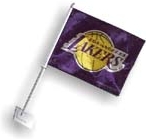PedalPower: Tricycles for Parking Meter Readers
On the City's website, aptly titled "Factoids," is the following:
"ELECTRICAL VEHICLES EMIT NO TOXIC EMISSIONS. Have you ever noticed that electric vehicles have no exhaust pipe? Think about it. No exhaust, no need for an exhaust pipe! And keep in mind that electricity is relatively inexpensive in comparison to Unleaded or Diesel fuel. We are evaluating the electric vehicles in different capacities -- you can see some of them at work at the beach and at the promenade. We have received funding for our leased electric vehicle program and are working on getting more."
While it is true, discounting for the moment the damming of free flowing rivers by hydroelectric plants and the slaughtering eagles by windmills, that it's nice that there are no emissions actually emanating from electric motors themselves, still, given the fouling of the air by burning fossil fuels and vegetable waste in the generation of electric power, it's hard to argue that electricity is emissions-free. Still, you have to admire the canniness of transferring the pollution to some other political bailiwick and managing to lay claim to all that "funding" in the process.
 guide from the
guide from the  River Delta and its watershed," providing drinking water for much of the state, irrigation for Central Valley agriculture, and a habitat for many plant and animal species, discusses the state of the levees, currently so fragile that an earthquake or a heavy rain could breech them, with Katrina-like economic consequences, and describes the state government's plans to fund repair of eroding structures. <
River Delta and its watershed," providing drinking water for much of the state, irrigation for Central Valley agriculture, and a habitat for many plant and animal species, discusses the state of the levees, currently so fragile that an earthquake or a heavy rain could breech them, with Katrina-like economic consequences, and describes the state government's plans to fund repair of eroding structures. < especially the underserved populations on the wrong side of the digital divide. Rural communities have known for a while that going wireless is cheaper, more reliable and allows even the most remote areas to log in. It spares the expense of laying down extensive networks of cables, not to mention the work and time involved.
especially the underserved populations on the wrong side of the digital divide. Rural communities have known for a while that going wireless is cheaper, more reliable and allows even the most remote areas to log in. It spares the expense of laying down extensive networks of cables, not to mention the work and time involved. 






